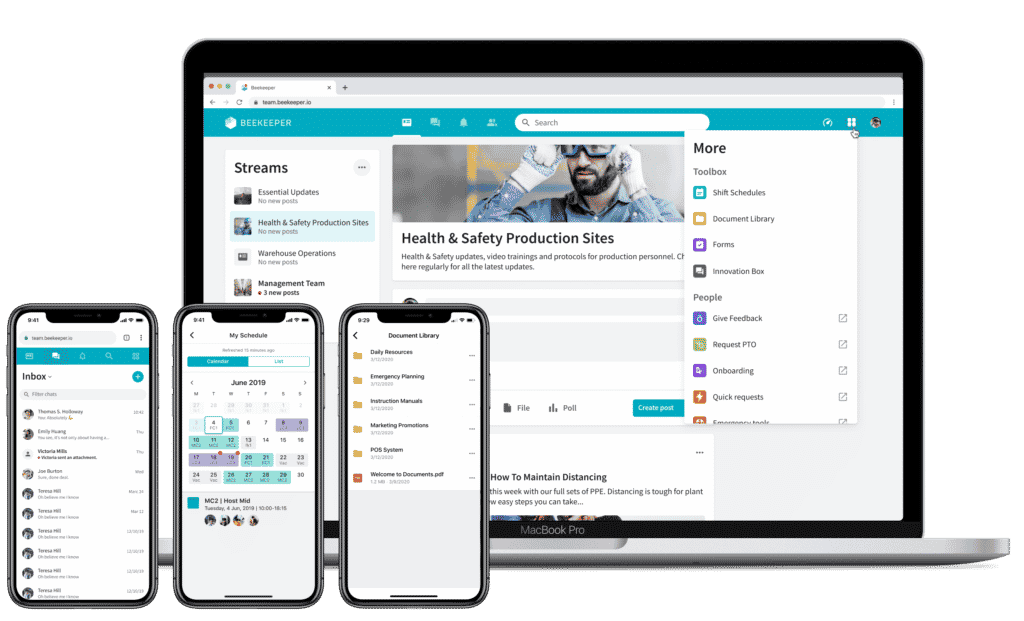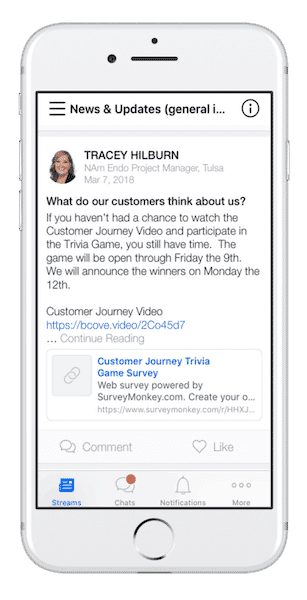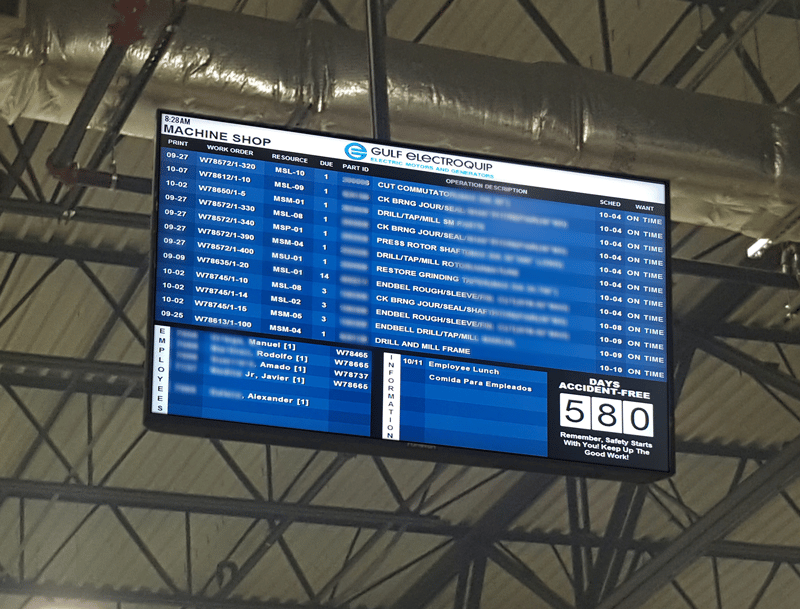5 Best Practices for Mastering Digital Communication in Manufacturing

Digital communication is a way of life in today’s tech-heavy world.
A digitally connected frontline workforce is a happy and prosperous workforce. Get your guide on the digital transformation for non-desk employees.
When was the last time you researched a new company or last communicated with your boss?
It was probably just this morning. And it was most likely done on your mobile device.
Digital communication has carved out space in almost every aspect of our personal lives. And if it hasn’t happened already, it’s also on its way to becoming an essential part of our work lives.
Let’s find out everything there is to know about digital communication and how it impacts everyone in your organization – from the frontlines to the C-suite.
Deep Diving: What Is Digital Communication?

To understand the rise of digital communication, it’s worth taking a detailed look at what is digital communication and why it is important.
Digital Communication Definition
Our digital communication definition is the exchange of information through digital channels, such as mobile apps, websites, videos, emails, etc.
Thanks to the internet and mobile devices, digital communications are consumed by audiences like customers, employees, media, and investors. These audience groups play a significant role in a company’s success.
So, it’s no surprise that businesses are expected to spend $1.3 trillion on digital transformation in 2020.
Why Digital Communication Matters
Using digital communication channels to reach your influential audiences is no longer optional.
Customers need access to information about your product and services. Employees expect important company news and resources – even when they’re on the production line.
Enter: digital internal communication channels. Digital channels like an employee mobile app, help workers access the information they need to do their job.
When employees are empowered to do their jobs well, companies benefit culturally, financially, and operationally.
Benefits of a mobile communication channel include:
- Automated and integrated workflows
- Eliminated silos
- A more open and transparent organization
- An inclusive and engaging company culture
- Reduced costs (and stress!)
- A more operationally efficient company
The State of Digital Communication in Manufacturing
The Fourth Industrial Revolution (Industry 4.0) is here. With it comes a mandate to increase digital communication in manufacturing.
According to Deloitte:
The [manufacturing] industry finds itself in the midst of the Fourth Industrial Revolution, which is poised to transform work at an unprecedented pace through exponential technologies such as artificial intelligence, advanced robotics, and cognitive automation, advanced analytics, and the Internet of Things (IoT).”
Industry changes are being driven by digital and technology transformation. That’s why digital communication – with machines and with each other – is more important now than ever.
Tools for Digital Communication in Manufacturing
To help businesses address manufacturing trends, like the rise of smart factories, tools for digital communication are popping up around every corner.
Here are two primary tools for digital communication in manufacturing today:
1. Digital Displays and Readouts
Manufacturing Metric Displays (MMD) are the new digital message boards for factory workers. MMDs display essential metrics, such as production targets, production progress, customer orders, or safety information, to engage factory workers in achieving operational goals.
There’s also manufacturing equipment digital readouts, which are digital communication tools that can save your employees time and energy. Digital readout tools monitor factory equipment with a digital feedback display.
2. Mobile Employee Communication Apps

Mobile employee communication apps are a must-have in keeping up with the industry’s digital transformation.
Manufacturing employees that are on the line rather than behind a desk still need reliable ways to receive information quickly.
Digital internal communication apps like Beekeeper amplify:
- Operational efficiency
- Product performance and quality
- Safe environments for employees
- Knowledge and information sharing
- Business results with a more informed and engaged workforce
Digital Communication Examples
Digital communication tools are accelerating, yet companies are left wondering how they should be using certain technologies.
Here are some of our favorite digital communication examples.
Dentsply Sirona Endodontics North America

Dentsply Sirona is the world’s largest manufacturer of professional dental products and technologies. With a global team of more than 16,000 employees across 40+ countries, the company struggled with getting the right information to the right people at the right time.
Leveraging its Beekeeper mobile employee communication app and factory floor digital signage, Dentsply Sirona was able to better communicate company announcements, updates, and safety reminders to all employees.
Holcim Switzerland and Italy

Holcim Switzerland and Italy are leading building materials and solutions providers with a distributed frontline workforce across 70 different locations.
Holcim adopted Beekeeper as its mobile communication tool to reach its employees, no matter their location, with important information.
Being in construction, a popular communication topic for Holcim is employee health and safety. Through the mobile app, the company can use digital communication like videos, photos, and communication streams to keep health and safety at the forefront of their operations.
5 Best Practices for Implementing a Digital Internal Communication Strategy
Implementing a new digital communications strategy from scratch can seem daunting. But it doesn’t have to be.
Here are a few best practices to help you get started.
1. Choose a Mobile-First Communication Platform
The majority of the world’s workforce does not function behind a desk.
They are on the production line, with customers, or out in the field. And, they always have their mobile device with them.
Choosing a mobile-friendly, cloud-based communication channel helps you make sure you’re reaching every employee when you need to.
2. Give Internal Training on Digital Communication
A common mistake companies make is implementing a new digital platform or forms of digital communication, but not offering any training for it.
While employees are increasingly familiar with a wide variety of digital communications and technology, that doesn’t mean they will automatically know how to use your platform properly. Providing a training program that helps employees feel comfortable with digital communication in your company is a must.
3. Develop An Engaging Roll-Out Plan
Having all your ducks in a row for launch day is critical in creating a widely adopted platform.
Ensure a successful rollout by:
- Aligning your mobile internal communication app with company objectives
- Engaging employee champions in the enterprise-wide adoption of the employee app
- Generating excitement and encouraging employee participation with incentives
- Keeping up the momentum by encouraging company leaders to use the platform regularly
4. Set Boundaries
Encouraging employees to use digital communication doesn’t mean employees must be tied to their mobile devices or laptops constantly.
Digital communication is invaluable at allowing employees to feel engaged from anywhere. But, the downside is that employees may feel obligated to answer work-related communications outside of regular hours.
Make sure to set boundaries early on so employees know when they should or shouldn’t disengage.
5. Measure Your ROI
Digital communication platforms like mobile apps come equipped with useful data and analytics to track the platform’s success. With your new mobile communication channel in place, make sure to capture your wins where you can.
To do that, use the available data to measure employee engagement through metrics like app adoption, employee productivity, job satisfaction, and turnover rates.

About the author
Beekeeper
We make frontline lives easier, work safer, and teams more connected so businesses can reach new heights. At Beekeeper, we’re dedicated to making frontline lives easier by connecting workers with the tools, support, and information they need to feel valued, do their best work, and drive the business forward.








